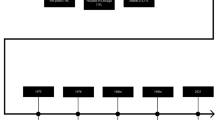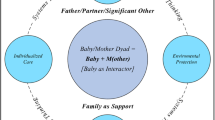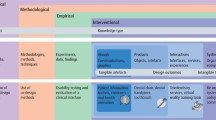Abstract
The physical environment in all of its aspects of space, structure, millwork, furniture, materials, flow, signage, and art has great potential to set a positive tone and invitation for families to be partners in the care of their infants. This article describes design strategies that create a series of positive welcoming first impressions throughout a NICU to support family caregiving and participation as parents of their infant and essential members of the care team.
This is a preview of subscription content, access via your institution
Access options
Subscribe to this journal
Receive 12 print issues and online access
$259.00 per year
only $21.58 per issue
Buy this article
- Purchase on Springer Link
- Instant access to full article PDF
Prices may be subject to local taxes which are calculated during checkout
Similar content being viewed by others
References
Lawton M, Nahemow L. Ecology and the aging process. In: Eidorfer C, Lawton M, editors. The psychology of adult development and aging. Washington, DC: American Psychological Association; 1973. p. 619–74.
Bosch SJ, Lorusso LN. Promoting patient and family engagement through healthcare facility design: A systematic literature review. J Environ Psychol. 2019;62:74–83.
Ulrich R. Effects of interior design on wellness: theory and recent scientific research. J Health Care Inter Des. 1991;3:97–109.
Knudson J. First impressions: New design solutions for healthcare lobbies and waiting areas aim to improve the patient experience right from the start. Healthc Des. 2017;17:36–7.
Carpman JR, Grant MA. Design that cares: planning health facilities for patients and visitors, 3rd Edition. San Francisco: Jossey-Bass; 2016.
Griffin T, Celenza J. Family-centered care for the newborn: the delivery room and beyond. New York: Springer Publishing Company; 2014.
Miles MS, Funk SG, Kasper MA. The stress response of mothers and fathers of preterm infants. Res Nurs Health. 1992;15:261–9.
Malkin J. A visual reference for evidence-based design. Concord, CA: The Center for Health Design; 2008.
Hathorn K, Nanda U. A Guide to Evidence-based Art. Concord, CA: The Center for Health Design; 2008.
Ulrich RS, Gilpin L. Healing arts: nutrition for the soul. In: Frampton SB, Gilpin L, Charmel PA, editors. Putting patients first: designing and practicing patient-centered care. San Francisco, CA: John Wiley & Sons; 2003. p. 117–46.
Funding
This article is published as part of a supplement sponsored by Philips.
Author information
Authors and Affiliations
Corresponding author
Ethics declarations
Conflict of interest
The authors declare that they have no conflict of interest.
Additional information
Publisher’s note Springer Nature remains neutral with regard to jurisdictional claims in published maps and institutional affiliations.
Rights and permissions
About this article
Cite this article
Johnson, B.H., Abraham, M.R. Reinforcing the essential role of families through first impressions of the physical environment. J Perinatol 40 (Suppl 1), 11–15 (2020). https://doi.org/10.1038/s41372-020-0747-5
Published:
Issue Date:
DOI: https://doi.org/10.1038/s41372-020-0747-5



